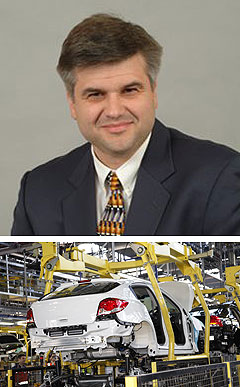News - HoldenGM Holden goes back to back with profitsCruze control: The success of the Cruze small car has ensured a second year of profit for Holden. Cruze helps Holden to $89.7 million profit – after Canberra’s $89.7 million handout7 May 2012 GM HOLDEN has recorded its second-successive annual profit, thanks to its successful locally made Cruze small car, cost reduction and Australian taxpayers. The 2011 after-tax result of $89.7 million announced today was identical to federal government assistance dished out to the local car-maker under the Automotive Transformation Scheme (ATS) last year. Putting the matching figures down to coincidence, the company said it was too simplistic to say that it would have only broken even without the $89.7 million in co-investment funding from Canberra, adding that the scheme required Holden to tip in a considerable investment in local product and manufacturing programs. The profit in the year ending December 31 represented a 20 per cent decline on the 2010 result, when GM Holden stormed back into the black with a $112 million profit – its first positive return after five years of red ink with accumulated losses of $576 million. The latest profit was made on consolidated revenue of $4.3 billion, slightly down on 2010’s $4.4 million – a decline blamed on a slip in sales of Holden’s locally made large car, the Commodore, and stock shortages of some imported models. Describing the result as solid, GM Holden chief financial officer George Kapitelli attributed the profit to the success of the locally assembled Cruze small car and a leaner cost structure. Mr Kapitelli told journalists that the Cruze manufacturing operation was profitable, but more importantly helped to make Holden’s local manufacturing business sustainable. “Local car makers face tough economic conditions with the high Australian dollar, higher prices and disruption in the local supply base and increasing competition and segmentation in the market,” he said.  From top: Holden chief financial officer George Kapitelli and the Cruze production line. From top: Holden chief financial officer George Kapitelli and the Cruze production line.“After the financial crisis we reshaped our business to improve structural cost, reduce our reliance on exports and bring the Cruze into local production so we could continue to make cars in Australia. Now around 60 per cent of our Australian sales are Australian-made cars, this is a great result. “We’re running our business responsibly and sustainably for the long-term. We’re making a strategic contribution to Australia, we’re committed to advanced manufacturing in this country and we’re committed to creating new opportunities for suppliers.” Mr Kapitelli said Holden faced headwinds in the form of the high Australia dollar that gave importers an advantage and disadvantaged exporters. He said Holden was also challenged by a lack of stability in its supplier base, with a number of parts-makers fighting for survival. Mr Kapitelli said Holden was working with suppliers to develop a more robust supply chain, not just for local manufacturing but for exports as well. Because of the introduction of Cruze into local production at Holden’s Elizabeth plant in early 2011, Holden vehicle production jumped 36.8 per cent last year, to 90,424 units. This volume was also assisted by a small recovery in vehicle exports, to 12,068 cars shipped to the Middle East, New Zealand, North America, Brazil and South Africa. However, Mr Kapitelli said Holden was not expecting any significant lift in export volumes in the foreseeable future. He said Holden’s manufacturing operations were focused on the domestic market, with some excess capacity removed from the factory with a move to a single shift running at a faster line speed. So far this year, Cruze sales are up 10.2 per cent, almost matching sales of Commodore, which has slipped 21.6 per cent. Engine exports from Holden’s Port Melbourne plant last year were up 14 per cent to 57,792 units last year, with V6s exported to South Korea, China, Thailand and Germany. Holden lifted its spending on R&D in 2011, up from $179 million in 2010 to $231 million last year, probably as it completed the development of its upcoming VF Commodore due in about 2014, while also working on a number of vehicles for sister companies overseas. The R&D investment took the spend on future models and technologies to more than $1.3 billion over the past five years. Holden held back the full 2011 balance sheet, saying that while it had filed the figures with the Australian Securities and Investment Commission (ASIC), they had not yet been published by the authority.  Read more |
Click to shareHolden articlesResearch Holden Motor industry news |
















Facebook Twitter Instagram